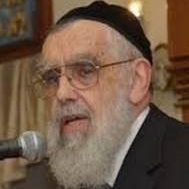The Many Layers of Baruch Atah

It is the most widely used — and also the most widely mangled and least understood brachah
IT is probably the most widely used phrase in the lexicon of the observant Jew: Baruch Atah, Hashem… Usually translated as “Blessed art Thou, O Lo-d…asher kideshanu… Who has sanctified us with His mitzvos and commanded us to… sound the shofar… don tefillin… eat matzah… wash our hands…” and so forth, it is the most widely used — and also the most widely mangled and least understood brachah.(Incidentally, it is pronounced not trippingly “bruch,” but in two distinct syllables, slowly, as in baw-ruch atah.)
Since thank G-d we have once again been found worthy of greeting Rosh Hashanah and Yom Kippur as they come roaring down the tracks toward us, it is worthwhile to take a fresh look at these familiar words. There is much to be learned from this simple yet exalted brachah, for it embodies the very relationship between the Jew and his G-d.
Those who recite it thoughtfully will notice a sudden change of tense in its second half. In the beginning is atah, Thou, in the second person, and then suddenly it switches to the third person: asher kideshanu b’mitzvosav — “Who has sanctified us with His mitzvos…” The well-known question is: why the switch from “Thou” to “He”?
To which there are numerous answers, one of which is that the brachah delineates two aspects of our relationship to our Creator: the close, personal intimate one, exemplified by the atah, and also the great distance separating mortals from the Eternal One, exemplified by use of the third person.
Well and good. But the brachah yields even more insight into the nature of G-d Himself. The baruch atah reflects G-d as the readily visible One, the Creator whose daily manifestations in nature and in life are apparent to everyone. This is the G-d Whom everyone can perceive and behold: He Who is nigleh — revealed.
But there is yet another element in the brachah: the Creator Who works quietly, invisibly, Who guides and protects us in ways that are concealed from us. This is expressed in the last half of the brachah, which is in the third person, not a direct, intimate address as in atah —Thou, but an indirect, more reverential, awe-filled third person: b’mitzvosav, His mitzvos. This depicts the Creator as one Who is nistar — hidden, Who acts in our lives in a concealed and hidden way.
It is remarkable that both aspects of G-d are described in Shemos 34, where Moshe Rabbeinu makes two requests of G-d: a) hodi’eini es derachecha — “make known to me Thy ways,” and b) hareini es kevodecha — “reveal to me Thy essence.”
The great sage Rabbeinu Bechaye (1263-1340 ) points out that G-d responds to Moshe in two ways: a)My ways are revealed only by My actions; and b)My essence can never be seen by mortal man; it must remain hidden. (See the relevant verses in chapter 34, and the “cleft of the rock” sequence.)
This dual nature of G-d is precisely what the split-tense brachah reflects: the open and revealed aspect of G-d, and the hidden and unseen aspect of G-d.
The observant Jew is bidden to recite one hundred brachos a day (Menachos 43b). It is not easy to maintain focus and concentration when the same phrase is repeated so frequently, but keeping in mind the inner meaning of these brachos will help us avoid the trap of thoughtless mumbling.
As we approach the Yamim Noraim, remembering what baruch atah really means will help us comprehend and absorb the monumental truths that are represented by these Days of Awe. May our year be filled with baruch from beginning to end, as we read in this month’s Torah portions, Baruch atah b’vo’echa… “Blessed are you when you come in, blessed are you when you go out” (Devarim 28:6).
(Originally featured in Mishpacha, Issue 928)
Oops! We could not locate your form.






